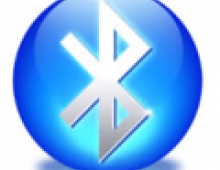
Bluetooth SIG, UWB to Work Together
The Bluetooth Special Interest Group (SIG) has announced its intent to work with the
developers of the wireless technology commonly known as ultra-wideband (UWB) to combine
strengths of both technologies.
This decision will allow Bluetooth technology to extend its long-term roadmap to meet the
high-speed demands of synchronizing and transferring large amounts of data as well as
enabling high quality video applications for portable devices. UWB will benefit from Bluetooth
technology's manifested maturity, qualification program, brand equity and comprehensive
application layer.
While details are still being worked out, the goal is to work towards an architecture that allows devices to take advantage of UWB data rates for scenarios that require high speed. Bluetooth will still be important to maintain backward compatibly with existing devices on the market and future products not requiring the higher data rate.
Advantages for Bluetooth Wireless Technology
With this collaborative approach, it will be possible to maintain existing Bluetooth core values like low power, low cost and unique ad hoc connectivity while enabling future usage scenarios requiring higher data throughput. Such an example would be streaming high quality video between portable devices. As digital content size increases, the bit rate required to move data from device to device increases. As such, a classic Bluetooth usage scenario today of exchanging a file is more likely to require UWB speeds in the future.
Advantages, Issues for UWB
UWB will benefit from Bluetooth technology's brand equity, market penetration and technical and organizational maturity. UWB can skip many time-intensive and costly hurdles in technology and market development by joining forces with a technology that is past that stage. Not only do companies want to leverage investments in Bluetooth technology, but 250 million consumers who also invested in Bluetooth technology will want those devices to work with future high data rate WPAN products.
Before bringing products to the global market some fundamental issues of UWB need to be resolved like interference issues for Wireless LAN, WiMax and new Cellular bands, in addition to the lack of a worldwide spectrum allocation for UWB.
CSR Supports Integration of UWB into Bluetooth Specification In a separate announcement, CSR PLC voiced its support for the Bluetooth SIG's move to integrate ultra-wideband technology (UWB) into the Bluetooth specification.
CSR will continue to work within the Bluetooth SIG to help finalize the new Bluetooth standard. CSR has updated its roadmap and will launch a Bluetooth product supporting UWB after the new Bluetooth standard is ratified by the Bluetooth SIG.
While details are still being worked out, the goal is to work towards an architecture that allows devices to take advantage of UWB data rates for scenarios that require high speed. Bluetooth will still be important to maintain backward compatibly with existing devices on the market and future products not requiring the higher data rate.
Advantages for Bluetooth Wireless Technology
With this collaborative approach, it will be possible to maintain existing Bluetooth core values like low power, low cost and unique ad hoc connectivity while enabling future usage scenarios requiring higher data throughput. Such an example would be streaming high quality video between portable devices. As digital content size increases, the bit rate required to move data from device to device increases. As such, a classic Bluetooth usage scenario today of exchanging a file is more likely to require UWB speeds in the future.
Advantages, Issues for UWB
UWB will benefit from Bluetooth technology's brand equity, market penetration and technical and organizational maturity. UWB can skip many time-intensive and costly hurdles in technology and market development by joining forces with a technology that is past that stage. Not only do companies want to leverage investments in Bluetooth technology, but 250 million consumers who also invested in Bluetooth technology will want those devices to work with future high data rate WPAN products.
Before bringing products to the global market some fundamental issues of UWB need to be resolved like interference issues for Wireless LAN, WiMax and new Cellular bands, in addition to the lack of a worldwide spectrum allocation for UWB.
CSR Supports Integration of UWB into Bluetooth Specification In a separate announcement, CSR PLC voiced its support for the Bluetooth SIG's move to integrate ultra-wideband technology (UWB) into the Bluetooth specification.
CSR will continue to work within the Bluetooth SIG to help finalize the new Bluetooth standard. CSR has updated its roadmap and will launch a Bluetooth product supporting UWB after the new Bluetooth standard is ratified by the Bluetooth SIG.




















